Into the Arctic: The ultimate wilderness holiday
It’s the ultimate wilderness holiday. An eight-day trip to a remote Arctic island with just beluga whales, polar bears and bearded seals for company
Every now and then, OAG heads far off the beaten track to see a corner of Planet Earth where few venture. Last July, I found myself 800km inside the Canadian Arctic Circle, on an uninhabited island bigger than Wales, at a temporary encampment called Arctic Watch.
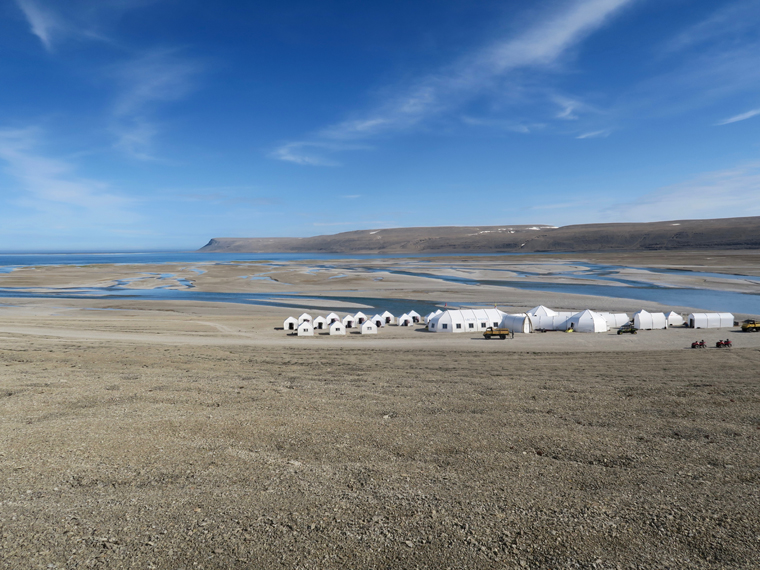
The Arctic Watch Campsite on Somerset Island
This far north, summer lasts eight weeks, darkness never falls and visitors fly in to Somerset Island’s temporary airstrip for one major reason. At the northern end of the island is Cunningham Inlet, a sheltered bay fed by the estuary of the Cunningham River. Every summer thousands of beluga whales gather to raise their calves, scratch themselves on the gently shelving gravel bottom of the bay, and make a lot of sociable squeaks, clicks and whistles.
For years, hardy researchers have monitored the endangered beluga population, but it’s now accessible to limited numbers of adventurous tourists thanks to Quark Expeditions, a polar specialist holiday company. Quark has teamed up with Canadian Arctic explorer Richard Weber and his family, who own the Arctic Watch Wilderness Lodge, to create a truly special trip to experience the beauty and wonder of this fabulous place.
The pull of the north
From the UK, the journey is a long one: a flight to Calgary in Alberta; another to Yellowknife in the Northwest Territories; then a four-hour flight to Somerset Island in Nunavut.
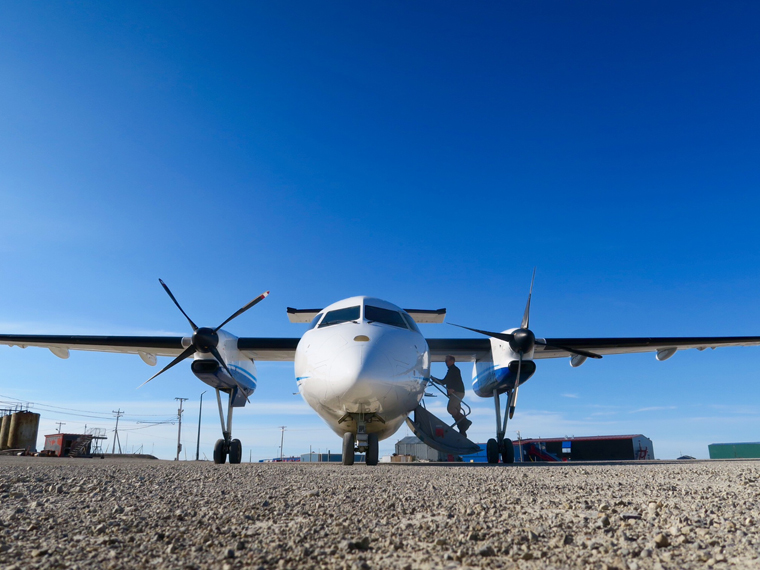
The Dash-8 turbo prop lands at Cunningham Inlet
Flying so far north, above the endless horizon of lakes, rivers, forest, tundra and, eventually, icebergs, means the flight plan needs an alternative airfield in case the weather closes in on the Weber’s homemade airstrip. And so the weather did just that, but it meant we flew some joyous circuits above Yellowknife and its myriad surrounding lakes, in a Dakota DC-3 from Buffalo Airways (of Ice Pilots TV fame) that first flew on D-Day in 1944.
A 6am start saw our group of 25 back at the airport. The Dash-8 turboprop aircraft was loaded not just with us but also supplies for Arctic Watch, so when we got the thumbs up to fly the relief was all too apparent.
We refuelled at Cambridge Bay and were soon dropping through the clouds above Cunningham Inlet. In the bay, we saw a few of the distinctive white shapes of belugas. The landscape was stark: no trees or vegetation, just the sparkling blue green water of the bay and its paler green fresh water tributary. Beyond it lay the bare expanse of grey-brown shale, with rising escarpments ringing the white-tented encampment, which is pitched on a bluff above the Cunningham
river estuary.
A short raft-transfer across the Cunningham and we entered the Arctic Watch camp for a briefing from the Weber team on camp routine. With hot showers and the thickest duvets I’ve ever seen, this is far from being ‘expedition basic’. And then there’s Justin Tse, the top Toronto chef, who somehow produces haute cuisine from the supplies we brought in with us.
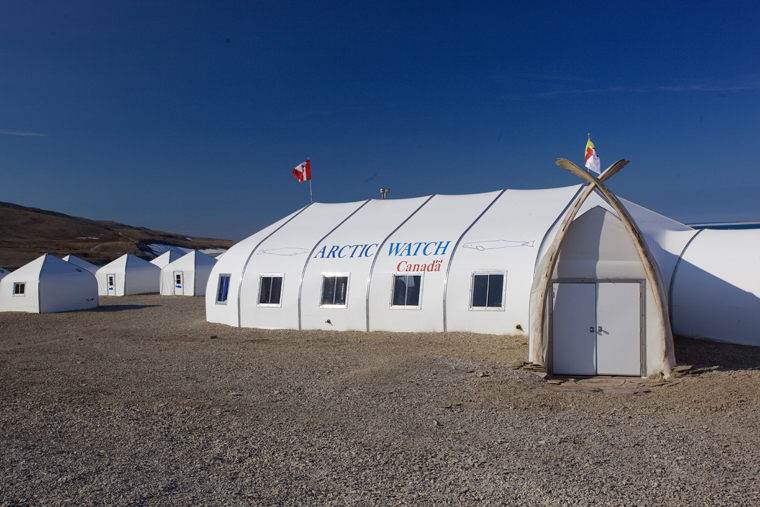
The Arctic Watch camp
entrance is flanked by a whalebone arch
Padding about the new arrivals was Demon, the Czech German Shepherd Dog. Carrying a piece of plastic pipe he invites guests to throw it for him. This I gladly did as Demon guards the camp from polar bears. He has saved lives, I’m told, as the island has plenty of roaming bears at this time of year. Being top predator in these parts, polar bears aren’t afraid of anything.
That said, British polar guide Hadleigh Measham tells us, the bears have long memories. If they’ve come across an armed human, they remember it forever as being bad news and will amble away, rarely needing a warning shot or more than a bark from Demon. This doesn’t stop them from being forever curious however, and if you’re not armed, well, you’re fair game.
A bearded seal on borrowed time
First on the trip’s itinerary, sea kayaking. The sun was shining and the waters of Cunningham Inlet had only the lightest of chop as we kayaked 2km across the bay, with Tessum Weber and French Canadian guide Alex leading us towards a cleft in the escarpment where a nameless river has worn a deep canyon over the millennia. The beluga, yet to arrive in serious numbers, were wary of our thrashing paddles and stayed well away. On the opposite shore, we clambered up through the canyon’s swirling rock pools and bobbed about in our drysuits in the deep pool scooped out of the rock by the action of a waterfall.
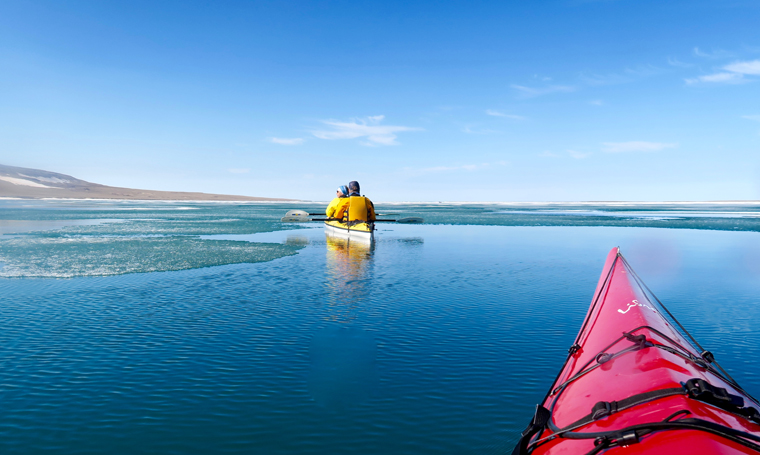
In search of seals in the Cunningham Inlet
Tracking the edge of the ice floe out towards Tern Island in the mouth of Cunningham Inlet, we spotted a bearded seal on the edge of it. We got to within 200 metres before he shuffled into the water with a plop. Tessum told us bearded seals are highly sought after by the Inuit; they’re much better eating than ring seals and every part of their body is useful. This makes them especially wary of humans. This bearded seal, however, hadn’t read the script. He approached our flotilla for a closer look, playing a game of ‘guess where I’ll pop up next?’. Tessum had never seen a bearded seal do this in his 25 years in the Arctic.
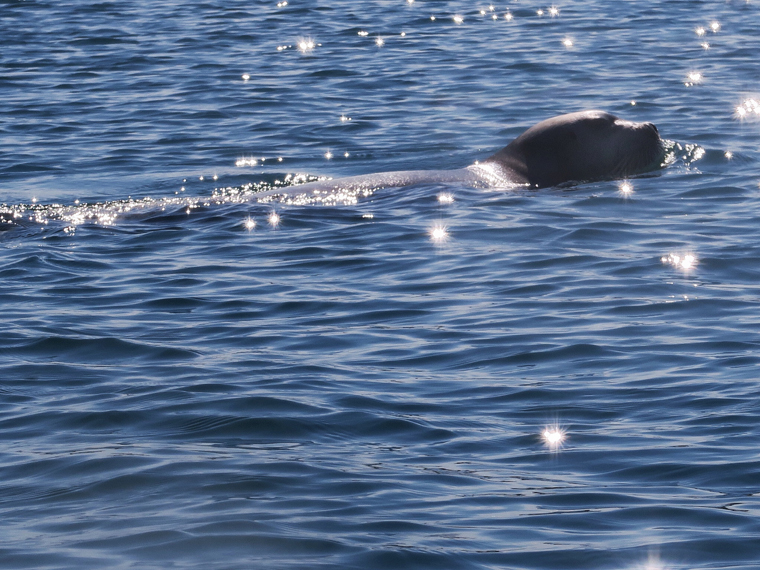
A brave bearded seal approaches the kayaks
We reached Tern Island at the mouth of the inlet after some dogged paddling. This curved scimitar of shale is where Arctic terns lay their tiny green-brown eggs. If polar bears time it right, they can scoff hundreds of eggs. These are the vagaries of survival in the wilderness. We didn’t see the camouflaged eggs at first; they lie in shallow indentations in the shale, which is spotted with bright orange lichen that feeds off the guano. When we saw the first egg, we realised we were standing in minefield of precious life – with angry parents wheeling above! It was a 20km sea-kayaking trip, and well worth the effort. I slept well that night, 24hr daylight be damned!
Arctic sashimi and musk ox
4WD quad bikes offer another take on the landscape. We followed the shoreline to the remains of an ancient Inuit shelter: a few placed rocks and some whale bones. The Paleo Inuit peoples’ survival and lifestyle was dependent on the ebb and flow of climate change and resultant food sources in this stark region. The Dorset people (named after Cape Dorset) once lived here before warming temperatures in the 1500s left the ice too precarious for them to hunt seal sustainably. The Thule people fared better, hunting musk ox and displacing the Dorset, until it got cold again and they too disappeared.
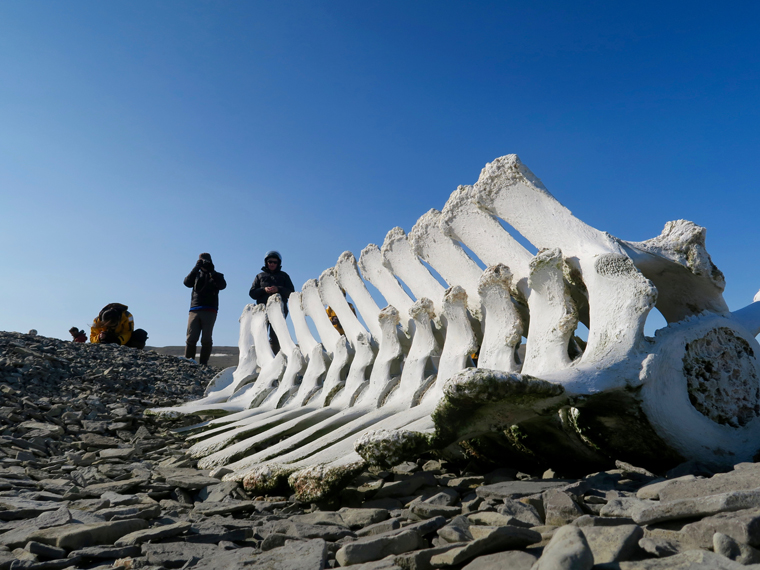
Bowhead whale bones, Barrow Strait, Northwest Passage
During one stop, we found ourselves hurriedly moved on by guides Hadleigh and Virginie. Our presence had disturbed a polar bear and her two cubs. Climbing out of one of the many gullies that run out to the shoreline from the ridge, we spotted the mother and her cubs, one clinging to her back, paddling 100m out, parallel to the shore. Hadleigh said that she would take them as far as 2km before coming ashore, such was her desire to avoid us. While it was great to actually see a bear, I felt a little wretched at causing them to take such a detour.
Another quad biking mission sees us ‘Mario Kart’ some 30km along the Korlak river valley and up onto Musk Ox Ridge — hard riding but good fun. These all-terrain vehicles were easy to operate but tricky to ride well.
At the lake we put together some rods and attached spinning reels with hefty lures. Inukshuk is a landlocked lake that was once sea, and its Arctic char have been isolated for millennia. We aimed to hook a few for sashimi back at camp. I caught three, annoying others in the group.
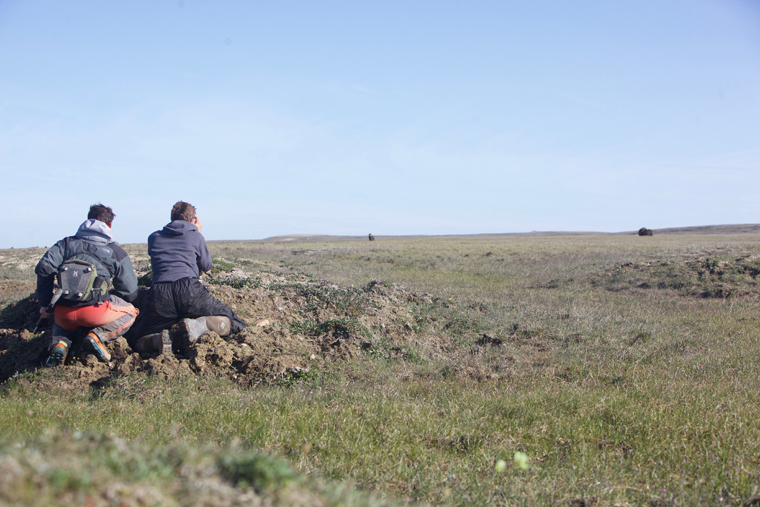
Stalking Muskox
Our return track was through the Korlak river valley and Hadleigh, known for his stalking skills, stopped and dashed up a 15m (50ft) bank onto the tundra to see if musk ox were grazing. They are, and we were soon crawling in from downwind to get as close to these skittish creatures as possible to take pictures.
These magnificent beasts have an insulation layer of soft ‘Qiviut’ wool that is unmatched by anything else in the animal kingdom. The crew here collect it whenever they can for spinning and knitting into beanies.
Rolling on the river
Rafting day. Most of the group headed south in the venerable Mercedes Unimogs along the Cunningham River valley to Sunday Lake. From there it was a 6km hike to the river. On the way we came across the fossilised bones of a bowhead whale, seemingly far inland but when they were laid to rest this was seabed. Nowhere near as ancient are a pair of Richard Weber’s overtrousers, sticking out of the now hard-baked tundra mud, abandoned when he got stuck there the summer before.

Will SUPs his way through the Arctic
The trucks deposited inflatable rafts, kayaks and even a stand-up paddleboard (SUP) at the river bend. We spent the next hours drifting, turning and paddling some 10km along the river through deep canyons and open tundra. I snaffled a kayak and raced ahead to spend time alone drifting with the fast and shallow river. Magical.
The guide team was experimenting with an SUP and offered me a go. Why not? Well, there were several reasons, like never having tried it before and an Arctic river not being ideal place to learn, but it was surprisingly fun and easier once my Mukluk boots were full of water.
Research, research, research
We visited Valeria Vergara’s research tent, a mile along the west side of the inlet from our camp, where she and her assistant spend their days observing and recording beluga wales. Valeria is an Argentinean scientist based at the Vancouver Aquarium. Since 2013 she’s been coming to Cunningham Inlet to better understand the communications of the highly gregarious and complex beluga whale. This population is one of seven in Canada and lucky enough to calve in such a pristine location. The population in the St Lawrence River, in Quebec, is not so lucky. Noise from boat engines interferes with their communication and chemical contaminants give them cancer.
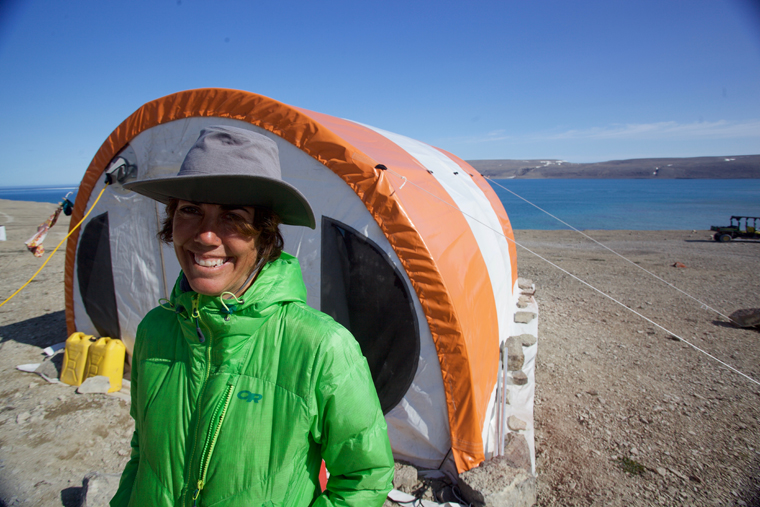
Valeria Vergara, beluga research scientist
Valeria is putting together a lexicon of beluga sounds correlated with behaviours and has 28 classifiable ones so far. By using the Cunningham population’s calls as a baseline she hopes to better understand how much damage is being done to the calls of St Lawrence population, to drive more action to protect the animals.
A bustling bay of belugas
My last day on Somerset Island saw me down at the shoreline taking pictures of the ever-increasing school of beluga mums, calves and males. It’s tricky to time a shot to catch the whales banana-ing – arching their back and tail upwards out of the water, or spy-hopping, when they pop up vertically to get a good look around.
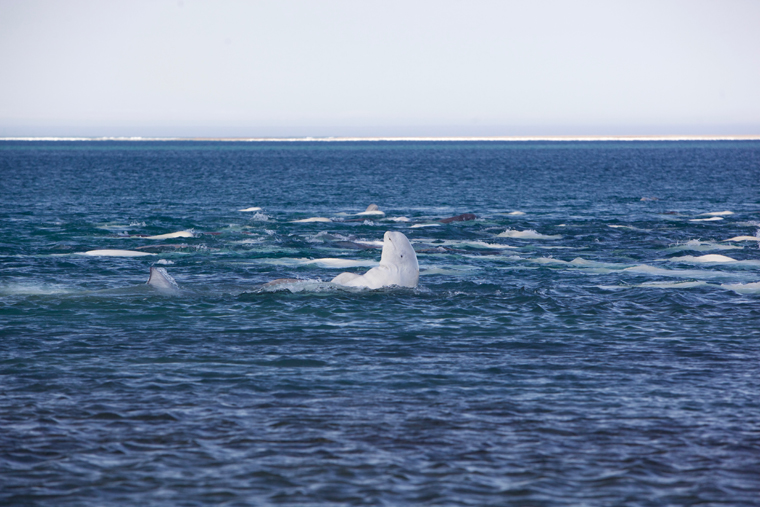
Beluga backstroke
Standing listening to the clicks of the whales and the camera shutter clicks of the watchers, it seems slightly surreal to be in so remote a place, witnessing such intense activity. A beluga has a naturally cheerful-looking visage, but their delight at being in the warm shallows, chattering away to each other, makes it impossible not to think that they are truly smiling at their good fortune. I know I am.
Wilderness, real wilderness, is hard to come by in our connected world. Those corners of our planet where humans are still but fleeting visitors are, like Somerset Island, too remote and challenging for us to stay long. Hooray for that, we say, long may it continue.
Do it!
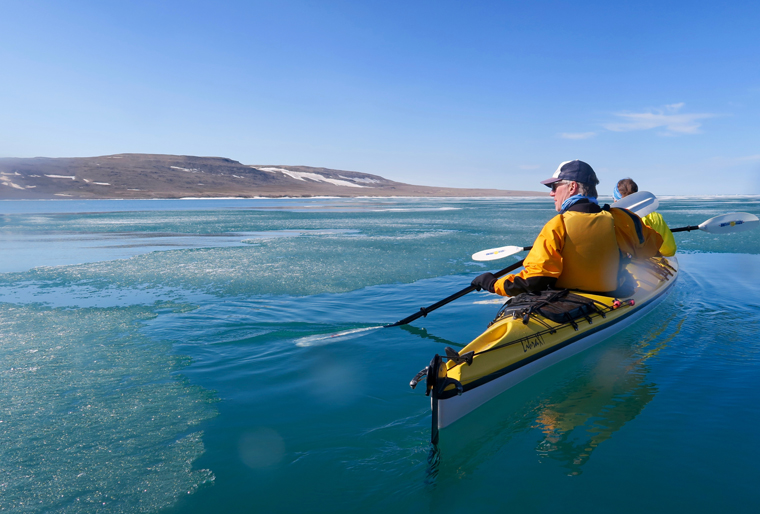
The Quark Expeditions’ 8–10 day Arctic Watch Wilderness Lodge trip begins in Yellowknife and includes accommodation and flights to and from Arctic Watch. Prices start from £5,300. You need get to Canada, so add return flights from London Heathrow to Yellowknife, via Calgary. An Air Canada economy return ticket will cost about £890 for mid-July.
Photos: Will Robson
